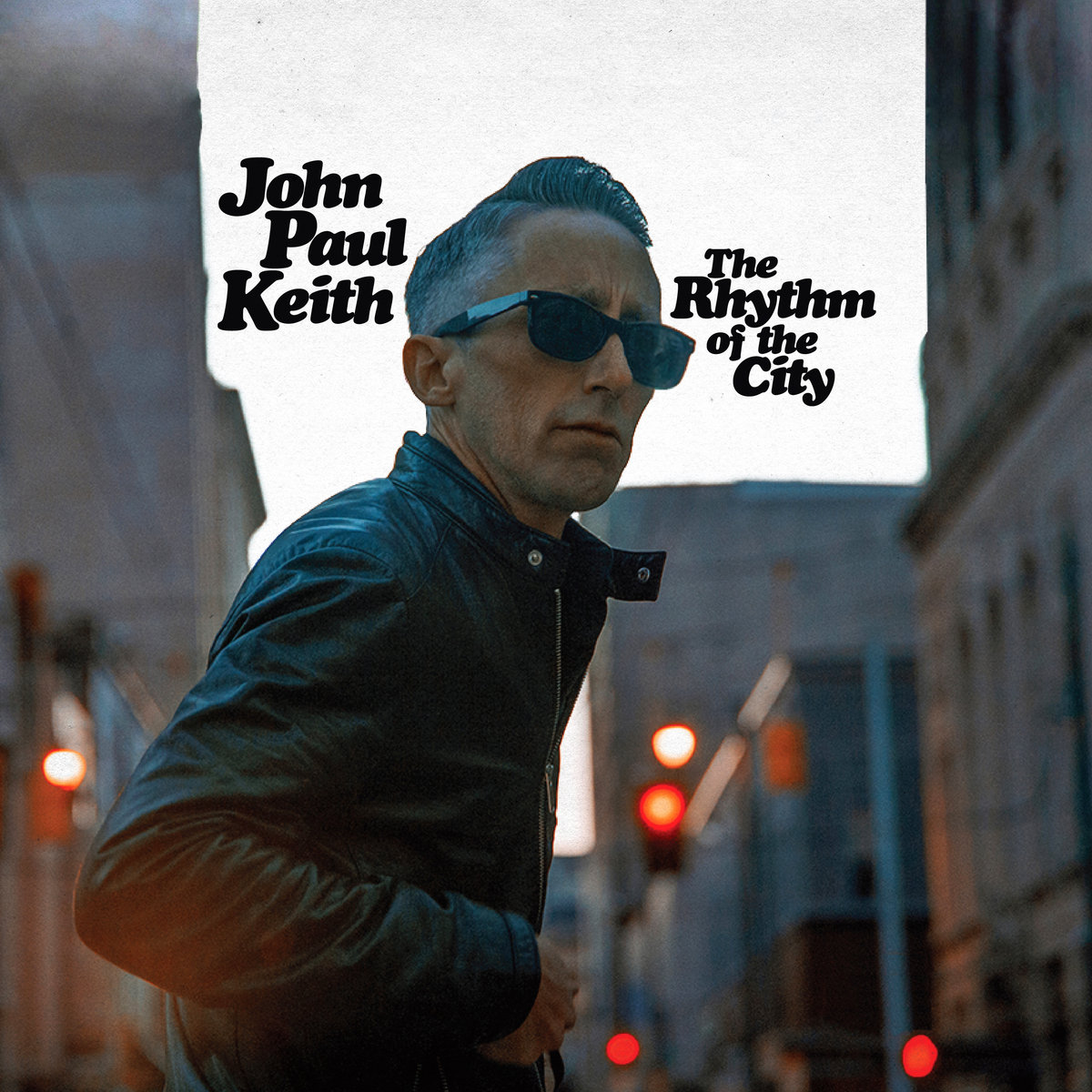
JOHN PAUL KEITH: THE RHYTHM OF THE CITY



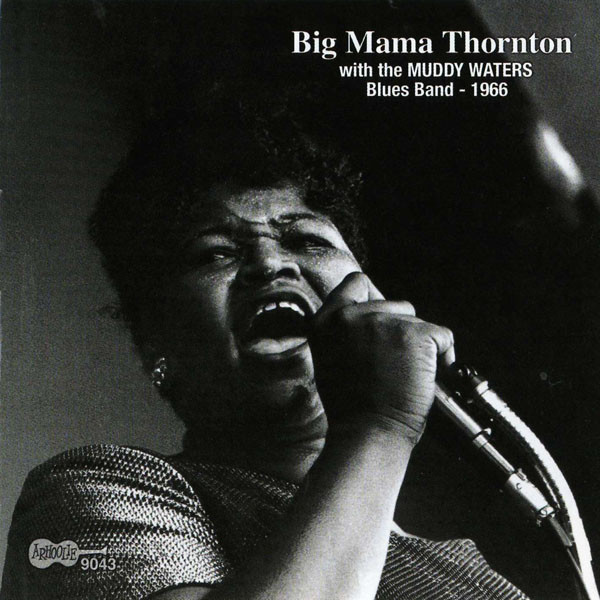
RECOMMENDED ALBUMS: BIG MAMA THORNTON IN EURPOE (Arhoolie), BIG MAMA THORNTON AND THE MUDDY WATERS BLUES BAND (Arhoolie), THE ORIGINAL HOUND DOG (Ace Records)
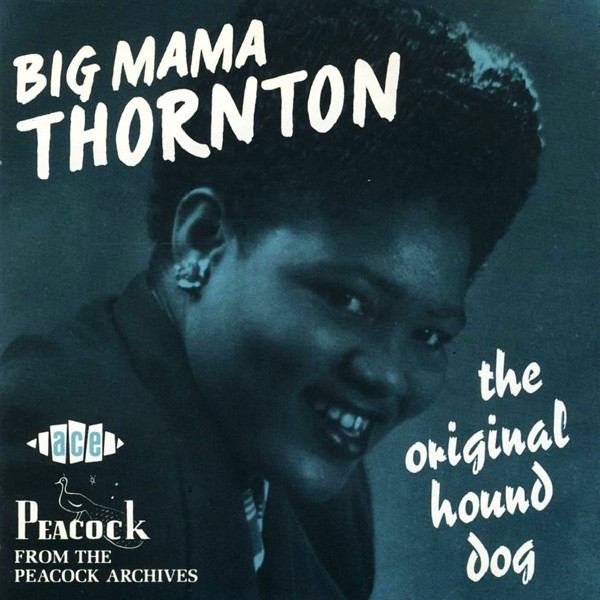
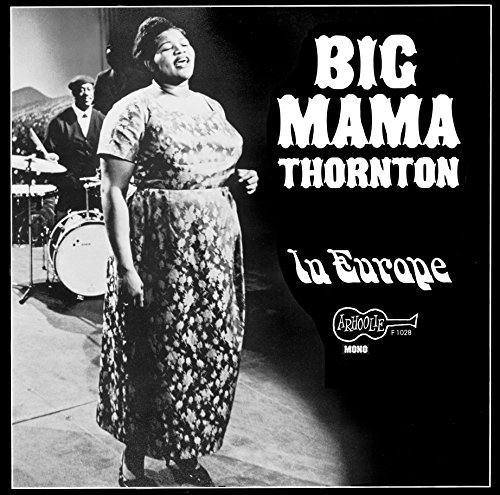
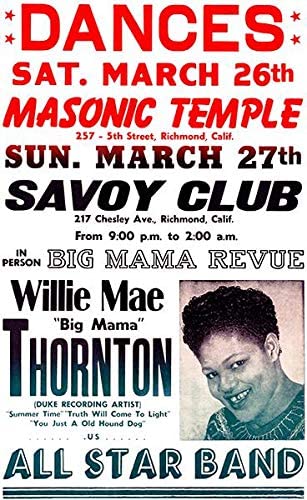
Born in Arkansas in 1915 Sister Rosetta Tharpe influenced Rock and Popular music more then most people know. A young Little Richard got his start by opening for her before anybody knew who he was. Elvis, Johnny Cash, and Bob Dylan all cite Sister Rosetta as a major influence, and during her heyday she performed for stadium sized crowds all over the world. In short, Sister Rosetta was a rockstar before Rock n’ Roll even existed.
 Soul Jazz RecordsÂ
For fans of James Brown, Irma Thomas, Tina Turner, and The Meters
When you think of the greatest Soul singers of all time you probably don’t think of the name Betty Harris. Despite being as talented as superstars like Tina Turner and Etta James, Ms. Harris isn’t a household name. During the 1960’s she only released a handful of singles and only a few of those became hits. She then retired in 1970 to focus on her family. While her music has become very popular among Soul record collectors and aficionados over the years, it has never reached a mass audience. Fortunately the good folks at Soul Jazz Records are trying to change that with their recent release, BETTY HARRIS: THE LOST QUEEN OF NEW ORLEANS SOUL!
THE BEGINNING
Born in Orlando FL, in 1941 (or possibly 1939) Ms. Harris started out singing gospel music when she was very young. Part of a very religious family, Harris wasn’t allowed to sing secular music while under her parent’s roof. She left home in her late teens to perform Blues and Soul music in California. After several years on the West Coast she moved to New York City where she hooked up with songwriter/producer Bert Berns. In 1963 she recorded her first hit, “Cry To Me”, a slow rendition of a tune singer Solomon Burke had recorded a year earlier. The song became a big hit for Harris and actually surpassed Burke’s original recording on the national charts! The success of “Cry To Me” inspired a few more releases from the Berns/Harris team including a fiery number called “Mo Jo Hannah”. Unfortunately none of these other recordings because hits and Burns and Harris went their separate ways.
WORKING WITH ALLEN TOUSSAINT
Shortly after her relationship with Burt Berns ended Harris met master Musican/Songwriter Allen Toussaint and began recording for his New Orleans based record label Sansu. Even though only one of the singles she recorded for Sansu charted nationally, the recordings she made while at the label are classic and make up the material on BETTY HARRIS: THE LOST QUEEN OF NEW ORLEANS SOUL. The music on this compilation is all killer-no-filler and ranges from classic R&B to hard funk! While it’s Harris’ larger-then-life vocals that commands the most attention on these songs we must also note that the backing band is made up of some of New Orleans’ finest musicians, including members of the legendary Funk group, The Meters. Like the Funk Brothers at Motown or Booker T. & The MG’s at STAX, The Meters are as important to the recording as the artist they are supporting. Finally, we must also acknowledge that none of these recordings would’ve been possible without master musician/producer Allen Toussiant behind the board. Not only do his talents as a producer take these recordings to another level, he also wrote almost all of these songs!
FANTASTIC NEGRITO: THE LAST DAYS OF OAKLANDÂ
LABEL: Blackball Universe
For fans of Fishbone, Tom Waits, Funkadelic, Junior Kimbrough
For those of you who believe there is no more good new music being released these days, I invite you to listen to the new album, THE LAST DAYS OF OAKLAND, from multi-instrumentalist Fantastic Negrito. Born Xavier Dphrepaulezz, and raised in a strict and religious household, the man now known as Fantastic Negrito is one of the most exciting artists to emerge from the Bay Area music scene in a long time. He moved to Oakland when he was 12 years old and immediately immersed himself in the wide variety of music styles that make up the Bay Area music scene. This explains to us why Dphrepaulezz’s own musical style really can’t be described as one genre. Elements of Funk, Soul, Gospel, Folk, and Blues make up the songs on THE LAST DAYS OF OAKLAND, and much like the city the album is named after, the music on the album is wonderful blend of styles and culture.
While this might be the first release for “Fantastic Negrito” it’s not the first release for Xavier Dphrepaulezz. In the early 90’s Dphrepaulezz was living in Los Angeles and briefly signed to Interscope Records and released one album. The album failed to satisfy the powers that be at Interscope and he was released from the label. Frustrated he actually gave up music. He then was involved in a terrible car accident which left him bedridden for several months. He returned to Oakland and several years later after the birth of his son the creative juices started to flow again and “Fantastic Negrito” was born.
The music on THE LAST DAYS OF OAKLAND takes the listener on a journey through the history of American roots music. The haunting Blues-Gospel tune “In The Pines” is a song that dates back to the late 1800’s and has been covered by everyone from Leadbelly to Nirvana. Here the song is given new life by Fantastic Negrito who recently released an accompanying video to the song that talks about the impact of gun violence in America today. Another stand-out track on the record is “Lost In The Crowd”. Originally released on his Deluxe LP in 2015 Fantastic Negrito commands your attention while he screams and shouts through this bluesy-rocker. A word also must be mentioned about the album’s cover art. The cover art features a character sitting a top a street sign that marks the location of Saint Andrews Plaza in West Oakland. Behind them is a beautiful drawing of the City of Oakland and a sunset. It might not be as important as the music on the record but the cover art truly makes this album a complete work of art. For fans who like something a little different or are fans of artists like Tom Waits, Fishbone, and Funkadelic, THE LAST DAYS OF OAKLAND is a must have.
Similar Artists: Junior Kimbrough, R.L. Burnside, Lightnin’ Hopkins
The Beginning: Fat Possum Records and Hill Country Blues
In 1992 a small indie label called Fat Possum Records gave the American Blues scene a much needed kick-in-the-ass when they released the debut album from 62 year-old Bluesman Junior Kimbrough. Entitled ALL NIGHT LONG, the record was met with rave reviews from both critics and Blues fans and gave Kimbrough some well deserved national attention. Shortly after the success of the Kimbrough record Fat Possum also started having success with another one of their artists, R.L. Burnside. Like Junior Kimbrough, R.L. Burnside was in his 60’s a resident of the Mississippi Hill Country and a master of a style of music called “Hill Country Blues”. Different than the well known Delta Blues style, Hill Country Blues focuses more on creating a groove and sometimes features other instruments such as Drums. With both the Kimbrough and Burnside records receiving some good press, Fat Possum began recording other Hill Country Blues musicians. Unfortunately the label quickly ran into the problem that many of the musicians they recorded were usually older and in very poor health. Sadly, many of them died before or shortly after their album got released. Down but not out Fat Possum Records kept plugging along and in 2000 they released a record by a 59 year-old construction worker named Robert Belfour.
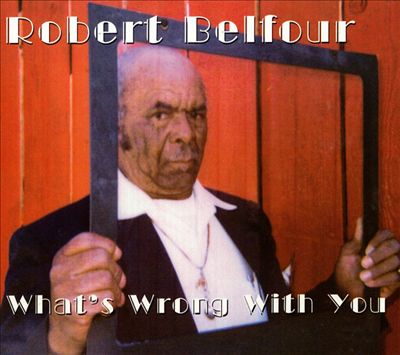 Fat Possum and Mr. Robert Belfour
Fat Possum and Mr. Robert Belfour
Robert Belfour was born in 1940 in Red Banks, Mississippi. Growing up in the Hill Country, he was surrounded by music and learned to play the guitar by watching his father play. As his interest in the guitar grew he began performing for friends and family at picnics. He continued his musical education by watching local legends like Othar Turner and Junior Kimbrough who both lived in the area and regularly performed at parties and in local Juke-Joints. Unfortunately when Robert was just 13 years old his father passed away and he was forced to get a job in order support the family. Then in 1959 Robert got married and moved to Memphis, Tennessee. He worked in construction for the next 35 years and only played music when he had time. In fact, it was until the late 80’s when he really began to take music seriously again. His first real break came in 1994 he was featured on the compilation album THE SPIRIT LIVES ON, DEEP SOUTH COUNTRY BLUES & SPIRITUALS. The recordings he contributed to the record got the attention of Fat Possum Records and in the year 2000 the label issued his debut album WHAT’S WRONG WITH YOU. A dark-acoustic record, WHAT’S WRONG WITH YOU showcased Roberts percussive guitar work and rich deep voice. The album featured a mixture of originals and covers, many of which had been made popular by other Hill Country Blues musicians. The album was a success with many Blues enthusiasts and introduced Robert to an international audience.
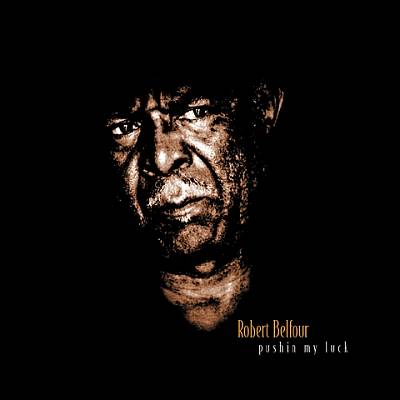 In 2003 Robert released his second album on Fat Possum, the humorously titled, PUSHIN’ MY LUCK. Like it’s predecessor, the album was primarily acoustic and pleased both fans and critics. Internationally, Robert’s popularity grew and he started to play a number of European Blues festivals. Back in the states, Robert kept his home in Memphis and continued to be a regular performer on the Juke-Joint scene in Clarksdale, Mississippi. A dynamic performer into his 70’s, Robert’s shows would usually last late into the the night and sometimes be as long as three hours! Unfortunately, all good things must come to an end. Robert Balfour passed away at his home in Memphis on February 25, 2015. Fortunately for us (and thanks to the good folks at Fat Possum Records) his recordings are still readily available and can be found on iMusic, Spotify, Amazon, and at your local record store.
In 2003 Robert released his second album on Fat Possum, the humorously titled, PUSHIN’ MY LUCK. Like it’s predecessor, the album was primarily acoustic and pleased both fans and critics. Internationally, Robert’s popularity grew and he started to play a number of European Blues festivals. Back in the states, Robert kept his home in Memphis and continued to be a regular performer on the Juke-Joint scene in Clarksdale, Mississippi. A dynamic performer into his 70’s, Robert’s shows would usually last late into the the night and sometimes be as long as three hours! Unfortunately, all good things must come to an end. Robert Balfour passed away at his home in Memphis on February 25, 2015. Fortunately for us (and thanks to the good folks at Fat Possum Records) his recordings are still readily available and can be found on iMusic, Spotify, Amazon, and at your local record store.
Few people were better at discovering musical talent in Louisiana during the 1950’s and 60’s then J.D. Miller and Eddie Shuler. Instrumental in bringing styles such as Zydeco, Cajun, and Swamp Pop to the ears of the world, they each made their mark by recording and producing local unknown talent. Miller recorded the artists he discovered then usually sold the tapes to other record labels while Shuler recorded and released music on his own Goldband label. Now, thanks to the fine people at ACE Records, there are TWO new excellent compilations that focus on the Blues recordings produced by Miller and Shuler.
Part of ACE’s “By The Bayou” series, these discs, entitled Bluesin’ By The Bayou and Bluesin’ By The Bayou: Rough & Tough, are both supreme examples of the Louisiana Blues scene during the 50’s and 60’s. Sometimes known as “Swamp Blues” the music on these recordings is a mix of down-home Country Blues with a few touches of R&B, Zydeco, and Cajun Music thrown in for good measure. These recordings are essential for any Blues or Roots Music fan’s record collection. This is as greasy as it gets!
Some of the artists featured on Bluesin’ On The Bayou
SLIM HARPO
Born in Baton Rouge, Louisiana, Slim Harpo was one of the most successful and best known of all Swamp Blues artists. His songs “I’m A King Bee” (1957) and “Shake Your Hips” (1961) were both covered by The Rolling Stones and he had a number one hit in 1966 with “Baby Scratch My Back”. Included on Bluesin’ By The Bayou: Rough and Tough are his single “My Little Queen Bee”, an answer to his first hit “King Bee”, and a cover of Lonesome Sundown’s “Bought Me A Ticket”
LONESOME SUNDOWN
Lonesome Sundown was born Cornelius Green in 1931 on a plantation in Donaldsville, Louisiana. Well versed in a variety of musical styles, Lonesome Sundown’s music ranged from down-home Blues to Country to Roll-licking R&B. He was never a household name but nevertheless was responsible for some of the most exciting music to come out of Louisiana in the 50’s and 60’s. Included on Bluesin’ By The Bayou: Rough and Tough are romping versions of his songs “I’m Gonna Stick To You Baby” and “If Anybody Asks You”. Both songs are essential listening for any Blues fan.
LIGHTNIN’ SLIM
One of the most important and influential bluesmen to ever come out of Louisiana, Lightnin’ Slim was actually born in St. Louis, Missouri. He moved to Louisiana when he was a teenager and soon picked up the guitar and began playing in clubs. In 1954 he recorded “Bad Luck Blues” with J.D. Miller and regularly performed with fellow Louisiana bluesmen Lonesome Sundown, Lazy Lester, and Slim Harpo. Included here in this collection is his song “Trip To Chicago” which talks about the groups “adventure” to play a gig in the Windy City! Fellow Louisiana bluesman Buddy Guy credits Lightnin’ Slim as one of his biggest influences.
LAZY LESTER
A talented multi-instrumentalist, Lazy Lester performed on many recordings produced by J.D. Miller as both a front-man and backup musician. His first major his was the his 1958 release “I’m A Lover Not A Fighter”. Originally written by J.D. Miller, this song put Lester on the map and was coupled with the b-side “Sugar Coated Love”. Still an excellent performer to this day, he still tours nationally and is a favorite at Blues festivals. He was inducted into the Blues Hall Of Fame in 2012. UPDATE 2018: Sadly Lester passed away on August 28, 2018. He was 85
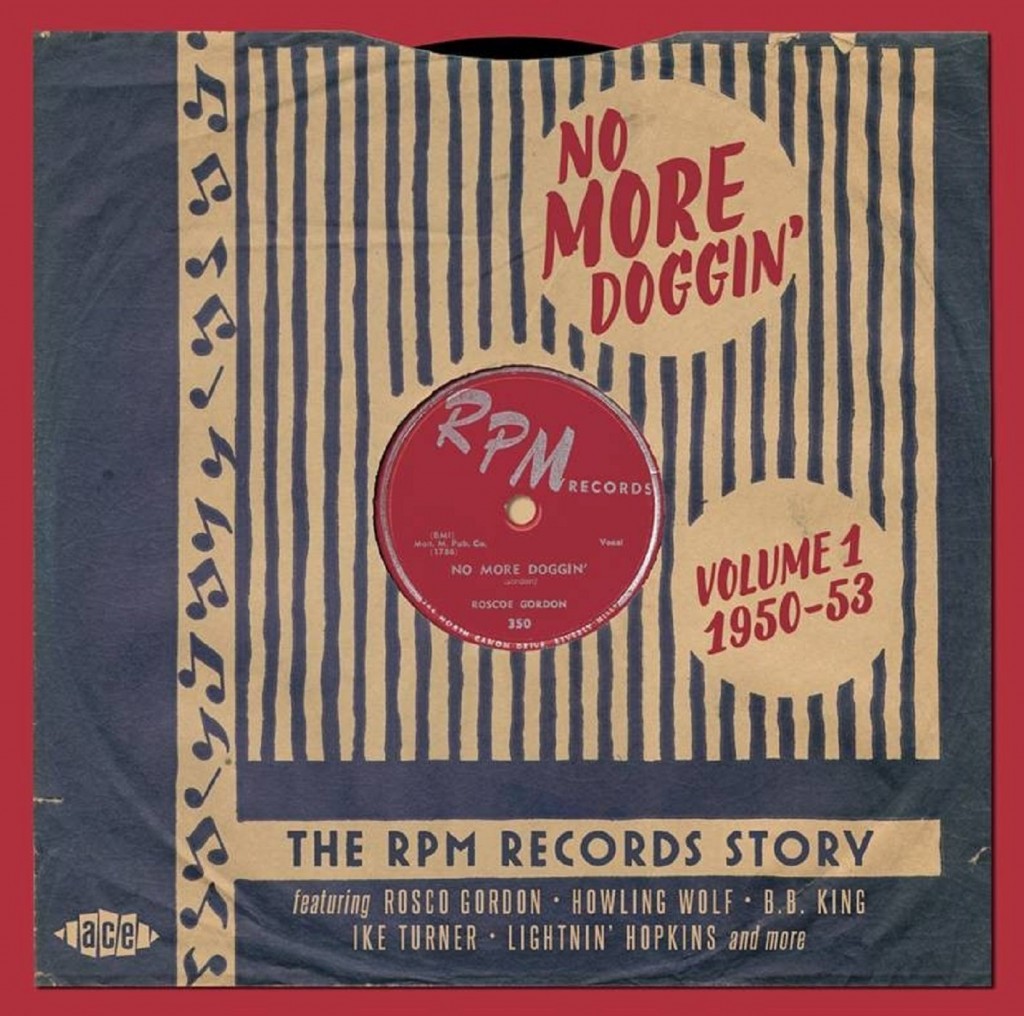 Full of Jump Blues, early R&B, and down-home Country Blues, the double-disc collection No More Doggin’ The RPM Records Story Vol. 1 might be one of the best introductions to early 50’s blues ever. Compiled by the good folks at ACE Records, this collection covers the early years of RPM Records and features well know artists like B.B. King, Howlin’ Wolf, and Lightnin’ Hopkins.
Full of Jump Blues, early R&B, and down-home Country Blues, the double-disc collection No More Doggin’ The RPM Records Story Vol. 1 might be one of the best introductions to early 50’s blues ever. Compiled by the good folks at ACE Records, this collection covers the early years of RPM Records and features well know artists like B.B. King, Howlin’ Wolf, and Lightnin’ Hopkins.
Started in 1950 by the Bihari Brothers, RPM was meant to be a subsidiary of the Bihari’s very popular label Modern Records. After initially having lots of success with Modern, the Bihari’s began having trouble getting their records played on the radio due to stations not wanting to play too many sides from any one label. So in order to get their product on the airwaves the Bihari’s started a number of subsidiary labels. Probably the most popular of Modern’s subsidiary labels, RPM introduced the world to a Memphis radio DJ by the name of Riley B. King. Eventually known as “B.B. King”, Riley came to the attention of the Bihari Brothers thanks to their working relationship with Memphis talent scout/producer Sam Phillips. Phillips at the time was recording local artists with his Memphis Recording Service then sending the masters to labels like Modern and Chess. Trough their relationship with Phillips, the Bihari’s got hooked up with some of the best talent in Memphis. Unfortunately their relationship ended when Phillips and the Bihari’s had a disagreement over a B.B. King session and went their separate ways. Fed up with feeding product he recorded to other labels, Phillips then decided to start his own label, Sun Records. As for Modern/RPM, even without the help of Phillips the label still went on to produce many more hits, including B.B. King’s breakthrough hit record Three O’Clock Blues.
No More Doggin’ The RPM Records Story Vol. 1 starts off with the Dixieland-style track “Alabama Bound”. Sung by Adele Francis, this tune was RPM’s first release in 1950. Other stand out tracks are Sonny Blair’s down-and-out blues ballad “Glad To Be Back Home”, B.B. King’s “Other Night Blues, and Howlin’ Wolf’s “Riding In The Moonlight”. My personal favorite recordings on this collection are the Lightnin’ Hopkins tracks. Excellent versions of “Bad Luck and Trouble” and “Another Fool In Town” showcase Hopkins at his bluesy best, while “Jake Head Boogie” shows that he also could ROCK when he wanted to. Another nice surprise on this collection is the tune “It’s Time For Lovin’ To Be Done”. Performed by Detroit Bluesman Little Eddie Kirkland, the song features uncredited backing vocals by the great John Lee Hooker!
As usual the folks at ACE left no stone unturned when putting this collection together. Included in this collection is a nice history of RMP records as well as a few words on all the performers. All of the albums 52 tracks sound crisp and clear thanks to the extra care shown by the folks who did the remastering. If you want to hear where Rock N’ Roll really began this collection is for you.
Mavis Staples is a living legend. Over the past 60 years she’s not only brought Gospel music to the masses but she’s also been a voice of hope and strength for those fighting for Civil Rights. Her career started in Chicago during the late 1940’s when she and her siblings would perform in churches alongside their father, the legendary Roebuck “Pops†Staples. With a sound that was rooted in Southern Gospel and Delta Blues “The Staple Singers†soon became local favorites and in the early 50′s began recording sides for labels like VeeJay, Riverside, and Checker. In addition to gospel music fans the band was also embraced by the folk music scene during the folk revival of late 50′s and early 60′s. It was during this time that the band became very active in the civil rights movement and regularly performed at rallies and events hosted by Dr. Martin Luther King.
In the late 60′s and early 70′s the music scene was changing and the band changed right along with it. They signed with the legendary STAX Records and under the guidance of STAX A&R man Al Bell they started adopting more of a Soul-Gospel style. Their music might have become a little funkier but it still contained the same message of hope, love and compassion. Songs like “Respect Yourself“, and “I’ll Take You There†made the band a household name and catapulted them into stardom. Unfortunately, due to some questionable business decisions by Al Bell STAX Records filed for bankruptcy in 1975 and was forced to shutdown.
The Staples pressed on and over the next several years put out several releases for a variety of different labels. While they had success with their 1975 album LET’S DO IT AGAIN the group mostly was out of the spotlight until the 1990’s. During the 2000’s Mavis continued to perform and release solo albums. Paired with producers such as Ry Cooder and Wilco’s Jeff Tweedy, these records introduced Mavis to a whole new audience. In 2013 her Jeff Tweedy-produced album You Are Not Alone won a Grammy for “Best Americana Album”.
This year Mavis will turn 75 years young and she’s just as popular as ever. People all over the world still cram into venues to see her perform and she’s a regular musical guest on late-nite TV. Her music still carries with it a message of hope and tolerance. A message that reminds us that even though there have been victories in the struggle for civil rights, the fight is far from over.
STAPLE SINGERS/MAVIS STAPLES SUGGESTED LISTENING
The Staple Singers: Uncloudy Day (VeeJay)
The Staple Singers: Freedom Highway (Epic/Legacy)
The Staple Singers: Be Attitude: Respect Yourself (Stax)
The Staple Singers: The Staple Swingers (Stax)
The Staple Singers: The Best of The Staple Singers (Stax)
Mavis Staples: We’ll Never Turn Back (Anti) produced by Ry Cooder
Mavis Staples: You Are Not Alone (Anti) produced by Jeff Tweedy
Mavis Staples: One True Vine (Anti) produced by Jeff Tweedy
LEE FIELDS & THE EXPRESSIONS EMMA JEAN Truth & Soul Records
For Fans of: Issac Hayes, James Brown, Solomon Burke, and Charles Bradley
This summer Lee Fields & The Expressions are back on the scene with a new record full of sweet soul music! Entitled Emma Jean in honor of Lee’s late mother, this record finds the band incorporating more elements of Folk and Gospel into their sound more then they have in the past. In fact, the album’s first single is a soulful version of the J.J. Cale tune “Magnolia”. Sounding a little like Solomon Burke, Lee croons his way through this Folk classic with help from pedal-steel guitar master Russ Pahl. While the song is stylistically a little different then songs Lee and his band have done in the past, they still sound great. That being said, Emma Jean has something for everyone. Fans of classic hard-soul will enjoy songs like “In the Woods” and “Stone Angel” while fans of the teary-eyed ballads will have a new favorite song in “Don’t Leave Me This Way”. The album’s standout track however is the piano-driven “Eye to Eye”. In this song the band sways back and forth while Lee pleads with his lover to take him back. Singing like his life depends on it, Lee is clearly still at the top of his game. For a guy who’s been releasing music since 1969, this album might be his crowning achievement.